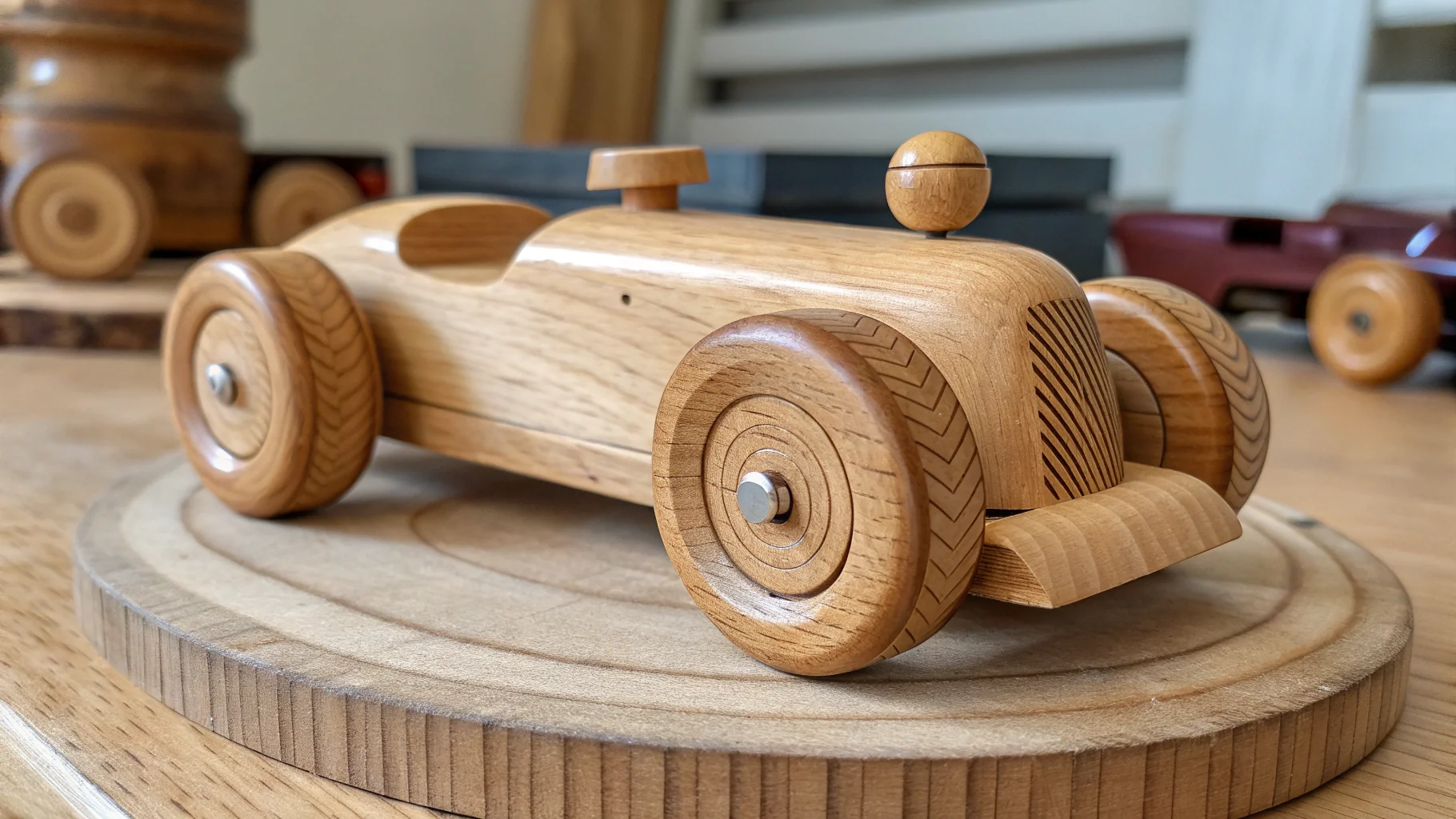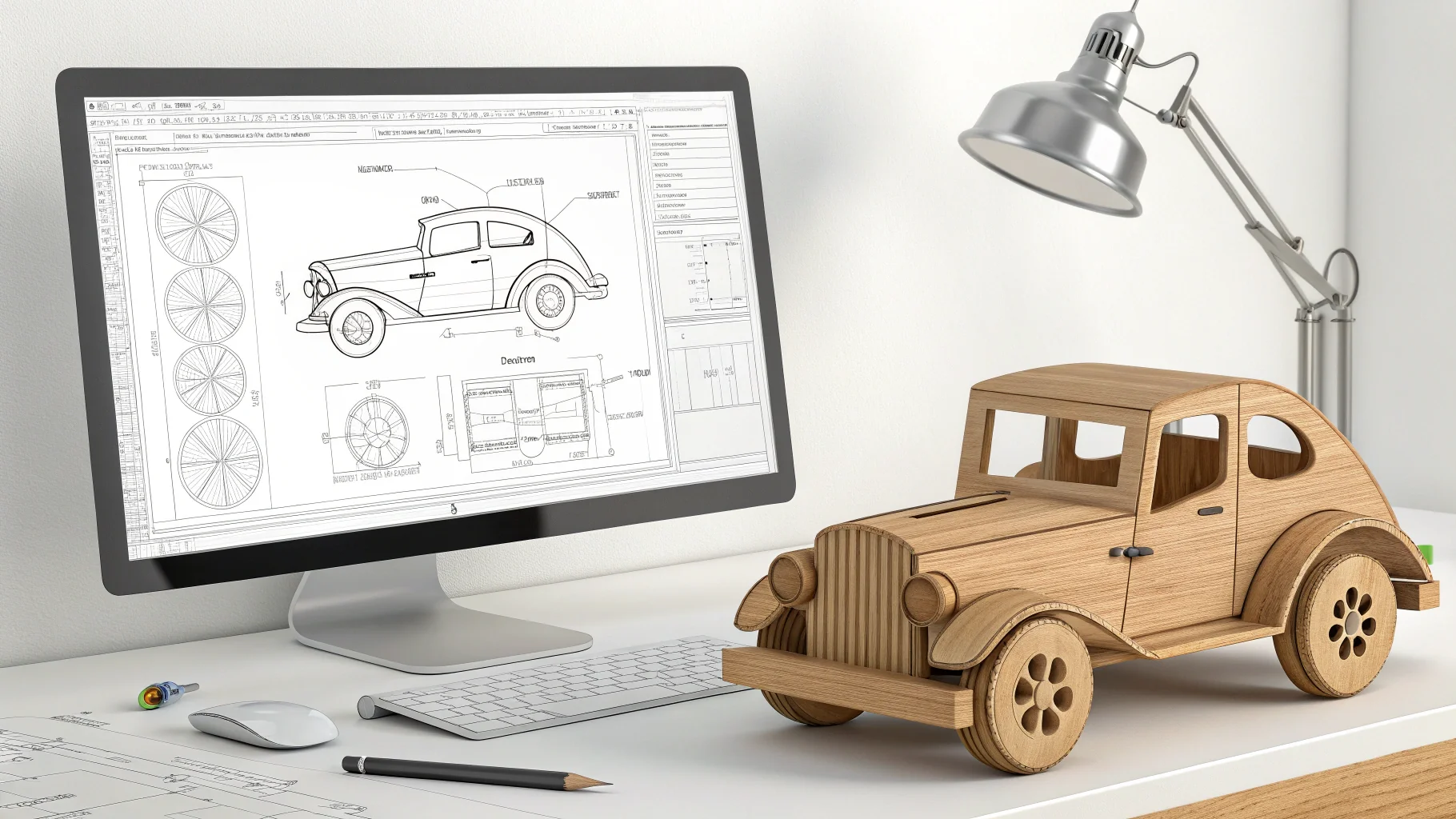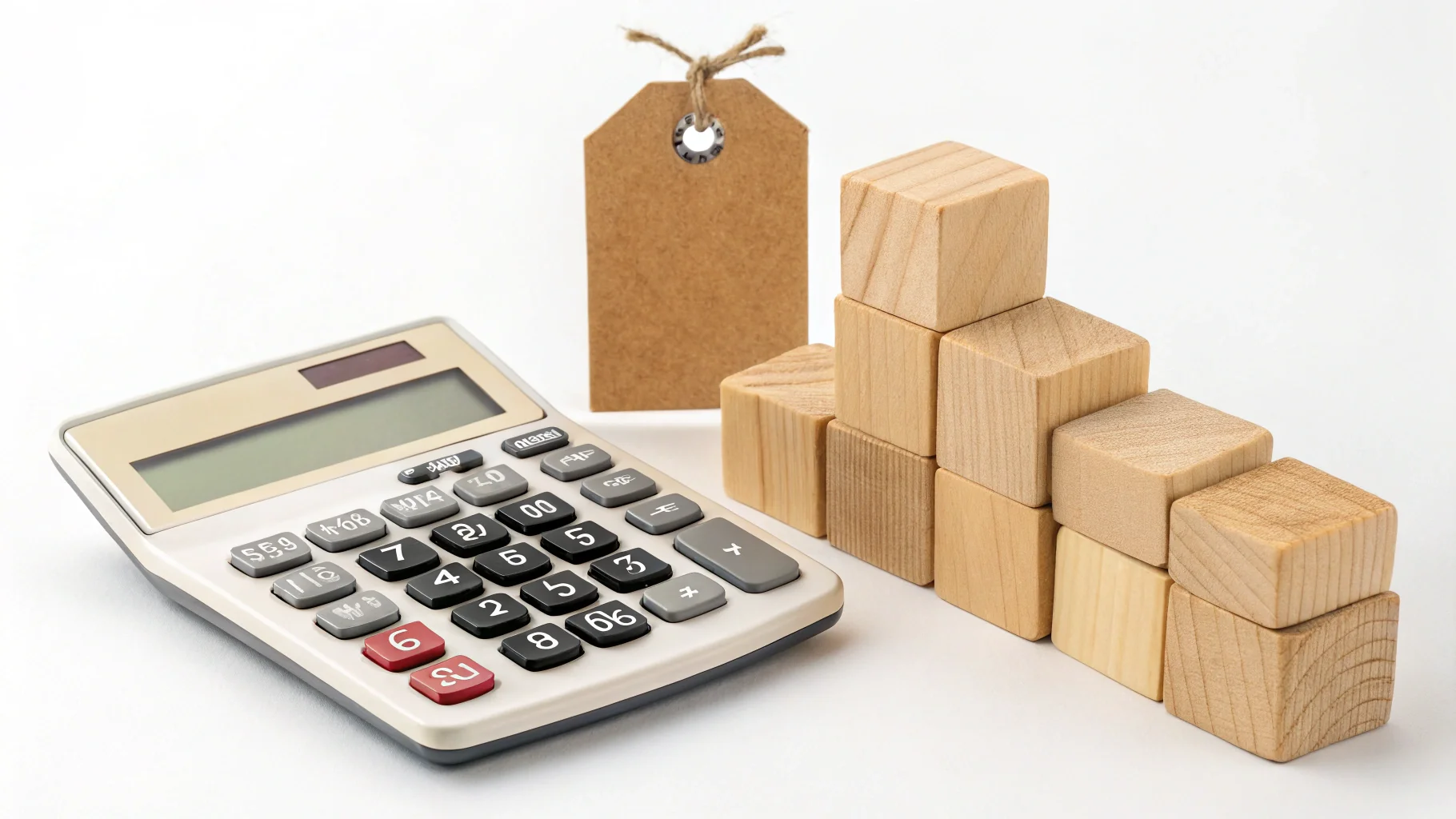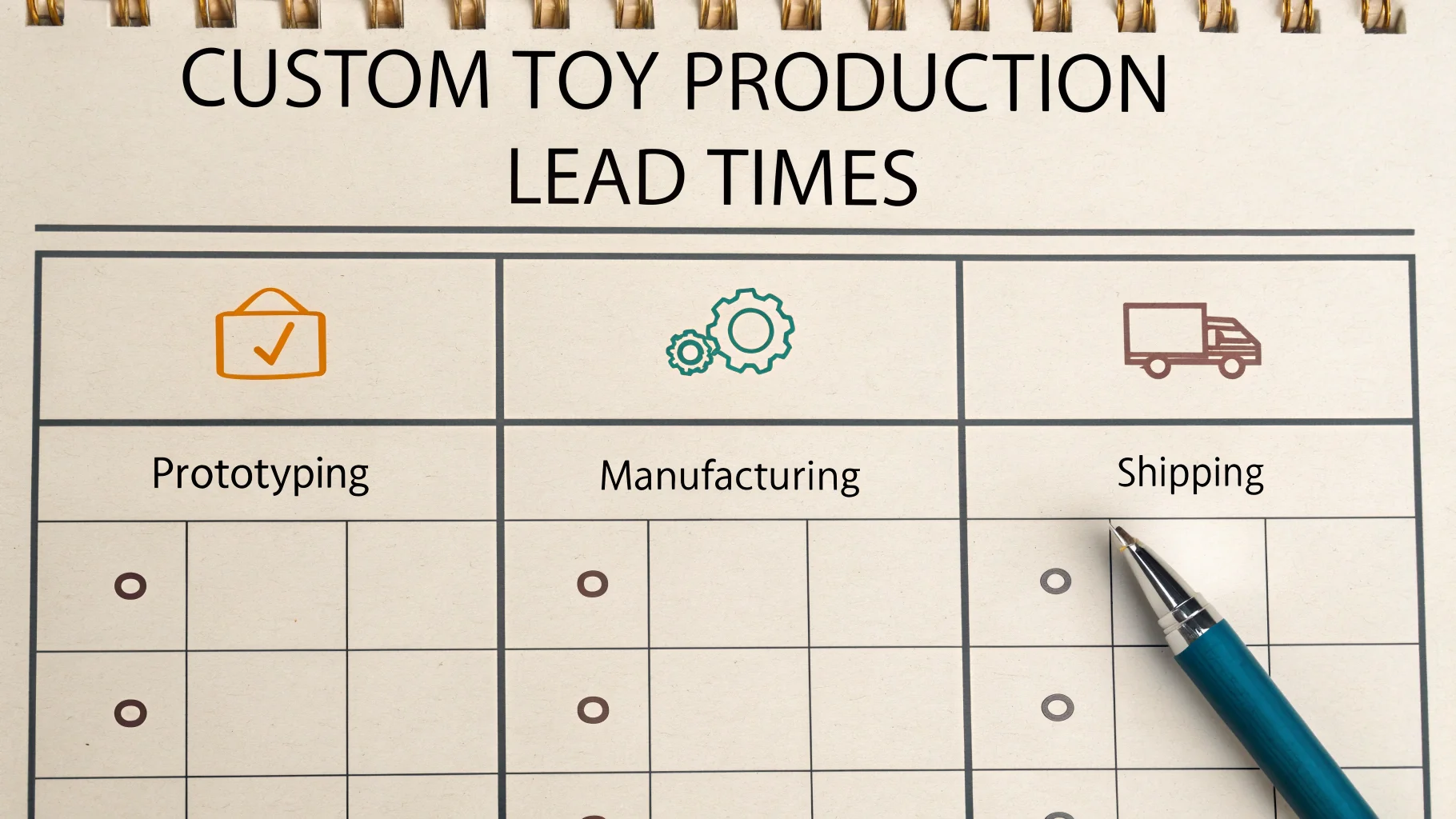
Choosing the right wood for your custom toys is tough. The wrong choice means poor quality and safety risks. I'll guide you through the best materials Chinese suppliers use.
For high-quality custom wooden toys, the best materials are hardwoods like Beech, Maple, and Birch[^1]. They are durable, non-splintering, and have a smooth finish ideal for children's products. Reputable Chinese manufacturers prefer these woods for their excellent workability and safety profile.

Selecting the right wood is just the first step in creating a successful product. I've seen many designers, even experienced ones like you, focus solely on the material and overlook other critical parts of the process. It's a classic mistake that can cost you time and money.
But what about safety compliance[^2], customization, pricing, and production timelines? These are the questions that separate a good idea from a profitable product. I've spent years navigating the manufacturing landscape in China, and I've learned these lessons the hard way. Let's break down what you really need to know to get it right.
All wood sourced from China for toys is FSC certified.False
This is a common misconception. While many reputable suppliers can and do offer Forest Stewardship Council (FSC) certified wood, it is not the default. You must specifically request it, and often pay a premium, then verify the certification chain.
Hardwoods like Beech and Maple are less likely to splinter than softwoods like Pine.True
This is due to their dense, tight grain structure. This density makes them more durable and resistant to chipping or splintering, which is a critical safety feature for toys that will be handled, dropped, and chewed on by children.
How do Chinese manufacturers ensure safety standards in custom wood toys?
You're worried about toy safety standards when manufacturing in China. Non-compliance can lead to recalls and harm your brand. Here’s how top suppliers meet international standards like ASTM and EN-71.
Reputable manufacturers ensure safety by using non-toxic, lead-free paints[^3] and finishes. They follow international standards like ASTM F963 (USA) and EN-71 (Europe) and provide third-party lab testing certificates to prove your custom toys are compliant and safe for the market.

When I first started, I assumed safety was a given. I quickly learned you have to be proactive. A good supplier doesn't just build your product; they build it to be safe and legal in your target market. This involves a multi-step process that you, as the designer, need to understand and oversee. It's not just about the final product, but about the choices made at every stage, from raw material sourcing to the final coat of paint. Let's look at the key areas they focus on.
Material and Finish Controls
It all starts with the raw materials. A reliable factory has a strict sourcing process for its wood, ensuring it's free from harmful treatments. More importantly, they will only use paints and lacquers that are certified non-toxic, lead-free, and free of heavy metals. You must specify this in your technical pack and ask for the material safety data sheets (MSDS) for the specific finishes they plan to use on your product.
Physical and Mechanical Testing
This is where the design meets reality. Factories perform internal tests to check for potential hazards. This includes drop tests to ensure durability, tension tests on small parts to prevent choking hazards, and checks for sharp points or edges. These tests are designed to simulate real-world use and abuse by children, ensuring the toy's structural integrity.
Third-Party Certification
Never take a factory's word for it. The most crucial step is independent verification. You should always budget for third-party lab testing[^4]. Your supplier can help arrange this with labs like SGS, Intertek, or TUV. They will test your final product against the specific standards for your country.
| Standard | Primary Region | Key Focus Areas |
|---|---|---|
| ASTM F963 | USA | Mechanical hazards, flammability, lead/heavy metals. |
| EN-71 | Europe (EU) | Broader scope, includes chemical, physical, flammability, electrical safety. |
| ISO 8124 | International | Similar to ASTM/EN-71, used in Australia and other regions. |
Chinese factories automatically test every batch of toys for safety compliance.False
Testing is typically done per production run, not for every single batch within that run. You, the client, must specifically request and pay for third-party testing. It is not an automatic service.
The EN-71 standard is a comprehensive set of regulations covering multiple safety aspects.True
EN-71 is not a single test. It's a series of standards (EN-71-1, EN-71-2, EN-71-3, etc.) that cover everything from physical properties and flammability to the migration of specific chemical elements.
What customization options are available for wooden toys from China?
You have a unique toy design but don't know if it's manufacturable. Standard options are boring, and you need your product to stand out. Chinese suppliers offer vast customization, from shape to finish.
Customization is extensive. You can specify wood type, shape (via CNC machining[^5]), colors (with Pantone matching), and finishes (lacquer, oil). You can also add branding through laser engraving or printing. Your detailed CAD files are the starting point for any custom project.

As a designer, your creativity is your greatest asset. The good news is that modern Chinese factories have the technology to bring even complex ideas to life. I've worked with clients on everything from simple alphabet blocks to intricate, multi-part mechanical toys. The key is to provide clear, detailed specifications. Your CAD files are the blueprint, but you also need to think about the details that make the product uniquely yours. The level of customization is one of the biggest advantages of working directly with a manufacturer.
From Design to Prototype
The process starts with your 3D CAD files (e.g., .STEP or .IGS). The factory's engineers will review them for manufacturability. From there, they use CNC (Computer Numerical Control) machines to cut the wood into your precise shapes. This technology allows for incredible accuracy and complexity. They will then create a "first article" or prototype for your approval. This is your chance to hold your design in your hands and request changes before committing to mass production.
Finishes and Branding
This is where your product's personality comes through. You can choose from a variety of finishes, from a natural oil that shows off the wood grain to a fully opaque, colorful paint job. For colors, you can provide Pantone (PMS) codes to ensure perfect brand consistency. For logos or detailed graphics, you have two main options: laser engraving for a premium, etched look, or screen/pad printing for vibrant, multi-color designs.
Custom Packaging
Don't forget the box! Your product's packaging is a critical part of the user experience and a key branding opportunity. Suppliers can produce fully custom-printed retail boxes, simple mail-order boxes, or even cloth bags. You provide the artwork, and they handle the production.
| Customization Method | Best For | Key Consideration |
|---|---|---|
| CNC Machining | Complex shapes, precise dimensions | Design must be manufacturable; undercuts can be difficult. |
| Laser Engraving | Logos, text, fine details | Creates a permanent, high-end look. Best on flat surfaces. |
| Screen/Pad Printing | Multi-color graphics, branding | Requires specific setup for each color; Pantone matching is key. |
| Custom Painting | Full-color products, branding | Specify non-toxic, child-safe paint. |
You can make unlimited changes to your design after production has started.False
This is incorrect and a recipe for disaster. Once you approve the final prototype and mass production begins, changes are extremely costly and often impossible without stopping the entire line and starting over. All changes must be finalized at the prototype stage.
Pantone (PMS) color matching is a common service offered for custom painted toys.True
Reputable manufacturers are very familiar with the Pantone Matching System. Providing specific PMS codes is the professional standard for ensuring the colors on your final product match your design intent and brand guidelines perfectly.
How does the pricing compare for bespoke wooden toys from Chinese suppliers?
Budgeting for a custom toy project feels like guesswork. Unexpected costs can derail your project and eat into your profit margins. I'll break down the key factors that influence the final price.
Pricing depends heavily on wood type, design complexity, order quantity, and finishing. Hardwoods like Beech are more expensive than Pine. Larger orders significantly reduce the per-unit cost due to economies of scale in manufacturing and material sourcing.

I always tell my clients that the price you're quoted is a direct reflection of the decisions you make as a designer. Every curve, every color, and every material choice has a cost associated with it. Understanding these cost drivers is essential for designing a product that is not only beautiful and functional but also commercially viable. A cheap quote isn't always a good quote. Let's dig into what really makes up the final unit price.
Material Costs
The type of wood you choose is a primary cost factor. Hardwoods like imported European Beech or North American Maple are premium materials and cost more. Local Chinese woods like Basswood or Birch offer a good balance of quality and price. The cheapest option is often Pine, but it's a softwood and more prone to denting and splintering, making it less ideal for high-quality toys.
Manufacturing Complexity
The more complex your design, the more it will cost. A simple block is quick to produce. A toy with many intricate curves requires more CNC machine time. A product with multiple parts that need to be assembled by hand will have higher labor costs. The number of colors and the type of finish also add to the price.
Order Volume (MOQ)
This is the most significant factor in your unit price. Factories have a Minimum Order Quantity (MOQ), often between 500 to 2,000 units. The setup costs (programming the CNC, creating jigs, mixing paints) are the same whether you make 100 or 1,000 units. Spreading that setup cost over a larger order dramatically reduces the price per toy.
| Cost Component | Description | Impact on Price |
|---|---|---|
| Raw Material | Cost of the wood itself. | High (Beech) to Low (Pine) |
| Labor/Machining | Time to cut, sand, assemble. | High for complex designs |
| Finishing | Painting, printing, engraving. | Increases with more colors/steps |
| Packaging | Cost of the custom box/bag. | Varies with complexity |
| MOQ | The total number of units ordered. | Higher volume = lower unit price |
The initial quote from a supplier is always the final price.False
An initial quote is an estimate based on your design. The final price can be affected by feedback from the prototype (e.g., a design change), fluctuations in raw material costs, or changes in shipping rates. Always confirm what is included in your quote (e.g., testing, shipping).
The tooling cost for wooden toys is generally much lower than for plastic injection molding.True
This is a key advantage. Wooden toys are shaped with CNC programming and simple jigs, which have minimal setup costs. Plastic injection molding requires creating a large, complex steel mold, which can cost tens of thousands of dollars before you produce a single part.
What are the typical lead times for ordering custom wooden toys from China?
You need to plan your product launch but are unsure about production timelines. Miscalculating lead times[^6] can mean missing key sales seasons, like the holidays. Here’s a realistic timeline from design to delivery.
Typical lead times are 60-90 days from order confirmation to delivery. This breaks down into 10-20 days for prototyping, 30-45 days for mass production, and 20-30 days for sea freight. This can vary based on complexity and factory schedules.

Time is money, and in manufacturing, timing is everything. I've seen promising products fail because they launched a month late, completely missing their market window. You need to think of the lead time not as a single number, but as a series of phases, each with its own potential for delays. Planning for this timeline is just as important as designing the product itself. A realistic schedule, with buffers built in, is your best defense against last-minute panic.
Phase 1: Prototyping and Refinement (10-20 Days)
After you submit your designs, the factory will create a physical sample. This process can take one to three weeks. This sample will be shipped to you for approval. If you need to make revisions, you'll have to account for the time to make a new sample. Clear communication and detailed feedback are key to keeping this phase short.
Phase 2: Mass Production (30-45 Days)
Once you approve the final prototype and place your bulk order, mass production begins. This is the longest phase. It includes sourcing all the raw materials, cutting and shaping the parts, sanding, painting, assembly, and final packaging. The exact time depends on your order quantity and the complexity of the toy.
Phase 3: Quality Control and Shipping (20-30+ Days)
Before the goods leave the factory, a final quality control inspection should be performed. After that, the goods are booked for shipping. Sea freight from China to North America or Europe typically takes 20-30 days on the water, plus a few extra days for customs clearance at both ends.
| Production Phase | Typical Duration | Key Activities |
|---|---|---|
| Prototyping | 10 - 20 days | Sample creation, shipping, your review and approval. |
| Mass Production | 30 - 45 days | Material sourcing, CNC cutting, sanding, painting, assembly. |
| Shipping (Sea) | 20 - 30 days | Ocean transit time. Does not include customs clearance. |
| Total Estimated | 60 - 95 days | From final design approval to port of arrival. |
Chinese New Year has no significant impact on production schedules.False
This is dangerously false. Chinese New Year is the single biggest disruption to the manufacturing calendar. Factories shut down completely for 2-4 weeks. You must plan for this by placing orders well in advance or expecting significant delays for any production happening between January and March.
Air freight is much faster but significantly more expensive than sea freight.True
This is correct. Air freight can cut shipping time from a month to about a week, but the cost can be 5-10 times higher than sea freight. It's only viable for very small, high-value shipments or emergency situations.
Conclusion
Choosing the right wood, ensuring safety, understanding customization, and planning for costs and lead times are crucial for success. Master these elements, and you can effectively source high-quality toys from China.
References
[^1]: Explore the advantages of these hardwoods for durability and safety in children's toys.
[^2]: Learn about the critical safety standards and testing processes for toy manufacturing.
[^3]: Find out why using safe finishes is crucial for the health and safety of children.
[^4]: Learn how independent testing ensures compliance with safety standards.
[^5]: Explore how CNC technology allows for precision and complexity in toy design.
[^6]: Get insights into the production timeline to effectively plan your product launch.
